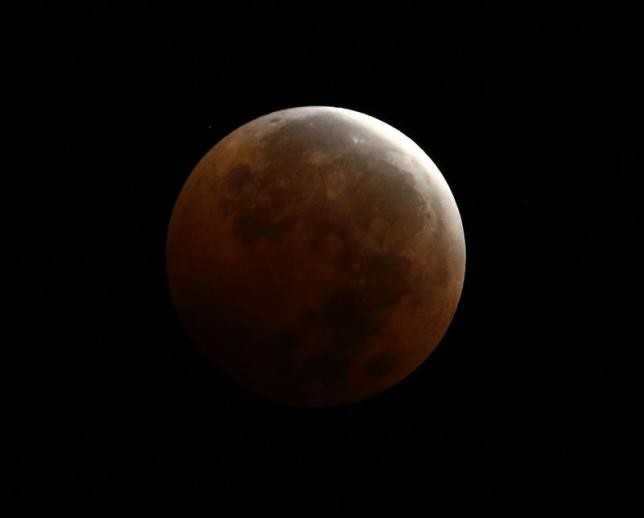Mark your calendars, skygazers! A rare astronomical event will occur on Sept. 28, 2015. This uncommon Total Lunar Eclipse concurs with Supermoon that also happens to be the final tetrad. Here is a guide to the forthcoming celestial event. Also, find out when and where to watch the occultation online through live streaming.
During the Lunar Eclipse, the sun, moon and the earth will roughly align as the moon passes directly behind the earth. This happens to be the final occultation in 2014 - 2015 tetrad-occurrence of four total lunar eclipse in the span of two years. The next Total Lunar Eclipse will occur on Jan. 31, 2018 and the next tetrad moon will rise 18 years after in 2033.
On this day, moon will be at its closest approach to the earth appearing 14% larger and brighter than the usual. That's why it is called Supermoon. The forthcoming Supermoon Total Lunar Eclipse will demonstrate another phenomenon called blood moon. Due to some sunlight that makes it through, making the surface of the moon appear red.
The September 2015 Lunar Eclipse is rare and dramatic and most parts of the earth will be treated to the spectacular view. Much of the United States will be able to witness the occultation.
According to Time & Date, South/West Asia, Africa, North America, South America, Atlantic, Indian Ocean, Arctic, Antarctica, Europe will be able to see at least some parts of the Lunar Eclipse combined with Supermoon. The phenomenon will last for at least 5 hours and 11 minutes and full eclipse will last for 1 hour and 12 minutes.
The full eclipse begins at 02:11 UTC on Sept. 28 and ends at 03:23 UTC. The occultation will reach its maximum point at 02:47 UTC.
No special equipment is required to view the Lunar Eclipse. Just look at the moon while the phenomenon is taking place. "It's one of best astronomical events to witness without any equipment and we know exactly when it's going to happen," Dave Samuhel a meteorologist with Accuweather said.
Meanwhile, Bill Ingalls, NASA's senior photographer and a fixture at NASA Headquarters has provided some tips to capture the rare celestial event. He urges people to get creative with the photos by "tying it into some land-based object." Click here to read Bill Ingall's tips to shoot the Lunar Eclipse.
Enthusiasts can also watch the rare event online through live streaming. Slooh Community Obeservatory will be covering the forthcoming Supermoon Total Lunar Eclipse. It will begin the webcast at 9:00 pm EDT on Sept. 27, 2015. Virtual Telescope will also provide live feeds of the astronomical event.



























